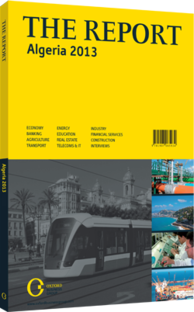OBG talks to Djelloul Achour, General Manager, Entreprise Portuaire de Béjaïa

Interview: Djelloul Achour
What reforms have had the most impact on public management of port infrastructure in Béjaïa?
DJELLOUL ACHOUR: Since 1982 a number of measures have been taken to decentralise and partly privatise port management. However, various factors continue to undermine our ability to adjust to new maritime developments, including the inadequate growth of port facilities, the sluggish adoption rate of new technologies and the lack of a long-term business strategy.
Under the supervision of the Ministries of Transport and Trade, more work is being done to find ways to alleviate cargo clearance procedures and increase storage space at port and in designated areas inland. In line with other ports across Algeria’s coastline, Béjaïa is aware of the need to expand and modernise its facilities in order to comply with global standards. As such, we are investing in an extension of our surface as well as docking and storage infrastructure that, in the long run, will provide 156 ha of storage space and more than 1200 metres of quay surface, with depths of up to 16 metres.
What are the biggest obstacles to port expansion?
ACHOUR: While current figures show that the port’s present capacity can sustain traffic in the short term, a rising number of vessels over the next few years will necessitate expansion. As mentioned above, we need to increase the length and depth of the port’s quays, expand the surface of handling and storage areas, and improve cargo flows to optimise efficiency levels.
Although plans are being drawn up, we are faced with a number of challenges that should be taken into consideration. Firstly, the port’s expansion needs to occur in tandem with the city of Béjaïa’s development projects. This is no easy task as the port is located close to the city centre and many of its tourist sites. Secondly, as with other Algerian ports, there is a lack of balance between imports and exports, increasing the duration of containers stored within the port’s facilities. The diversity of cargo makes it difficult to specialise, while the port is also hampered by the lack of dry port space that could alleviate congestion. Moreover, the port is not making sufficient use of ICT solutions that would enable the digitisation of many cargo clearance processes. Improvements in this area would allow the private and public sector to significantly simplify procedures and shorten the amount of time spent at port.
How can balance be maintained between adequate cargo inspection and efficient Customs clearance?
ACHOUR: To maximise the competitiveness of our businesses, Customs procedures must be simplified. Above all, we need to set up an enabling regulatory framework. In order to reduce the duration of clearance procedures, modern Customs entities around the world are adopting digital risk analysis systems that take into account the rise in traffic, all the while safeguarding the origins and quality of incoming and outgoing cargo. Algeria has yet to get up to speed with such practices, for instance permitting electronic payments and establishing a single window system.
What role does the port of Béjaïa play in establishing an interconnected transportation system?
ACHOUR: One of our objectives is to become a transshipment destination, particularly for goods destined for the Hauts-Plateaux. In this, the port plays a vital role in ensuring an efficient, multi-modal transportation system aimed at optimising the region’s competitiveness. It is therefore essential that we develop dry ports, temporary storage locations, and logistics platforms linked to the seaport and connected to the hinterland.
Moreover, to optimise the added value of such facilities, we require strong relationships with partners who can be trusted to establish and guarantee multi-modal synergies. Ultimately, of course, it will be up to the private sector to offer inter-modal transportation solutions, including rail and road. The responsibility of the port of Béjaïa will be to supervise and connect all these different modes of transportation, in order to link them as efficiently as possible to areas of economic activity.
You have reached the limit of premium articles you can view for free.
Choose from the options below to purchase print or digital editions of our Reports. You can also purchase a website subscription giving you unlimited access to all of our Reports online for 12 months.
If you have already purchased this Report or have a website subscription, please login to continue.

